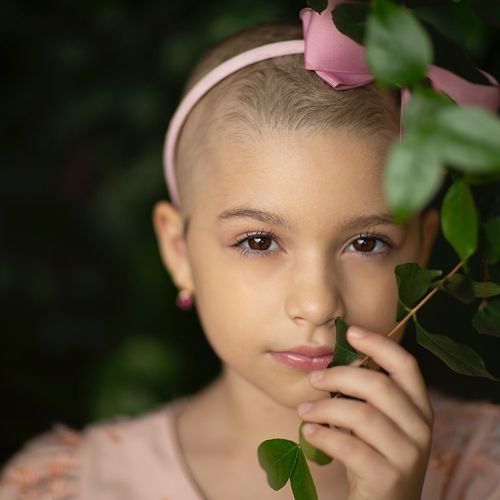Survivors of pediatric cancer face nine times the normal risk for developing sarcoma—a cancer of the connective or supportive tissue at least five years after treatment for the initial cancer, a new study reveals.
The risk for developing sarcoma is particularly elevated among patients with a family history of cancer or whose primary childhood bout was a form of sarcoma, a bone tumor or Hodgkin's lymphoma, the researchers found. The use of radiation and certain kinds of chemotherapy drugs was also associated with higher sarcoma risk.
"This study is a red flag," said lead author Dr. Tara O. Henderson, of the department of pediatrics within the hematology-oncology section at the University of Chicago's Pritzker School of Medicine. "And it shows that, if a patient with a history of childhood cancer later presents with a lump and a bump anywhere on their body, you need to be more suspicious of sarcoma than you would be for someone in the general population."
According to the American Cancer Society. more than three-quarters of all pediatric cancer patients now survive five years or more.
The authors note that previous research has shown that among such survivors, a secondary cancer of some kind is the leading cause of death. Sarcoma is known as a particularly stealthy though rare threat, whose nonspecific symptoms make it difficult to diagnose.
The Study
Henderson and her team analyzed data on more than 14,000 American and Canadian patients participating in the Childhood Cancer Survivor Study—the largest ongoing analysis of pediatric cancer patients conducted to date.
All the patients in the study were under the age of 21 when they were diagnosed with cancer between 1970 and 1986. All lived at least five years past their initial diagnosis of leukemia, Hodgkin's lymphoma, non-Hodgkin's lymphoma, neuroblastoma, sarcoma, kidney or bone cancer, or cancer of the central nervous system.
Results
Henderson and her colleagues found that 751 secondary cancers developed among the study participants, of which 108 were sarcomas affecting 104 patients. Such sarcomas were diagnosed an average of 11 years after the pediatric cancer diagnosis.
Secondary sarcomas, new cancers that start after primary cancer has been treated, were determined to be the ultimate cause of death for more than one-third of the 104 secondary sarcoma patients.
The sarcoma patients were also found to be more likely to have received radiation for their pediatric cancer, have received higher doses of two chemotherapy drugs (anthracyclines or alkylating agents), have a family history of cancer or a history of other secondary cancers themselves; or have battled particular types of pediatric cancer, including sarcoma.
The authors noted that a history of cancer among first-degree relatives was found in 22% of the sarcoma patients. They also pointed out that patients who were particularly young when first diagnosed with childhood cancer—those under the age of 4—appeared to have the highest risk of developing sarcoma later.
Nearly 80% of the 104 sarcoma patients had received radiation, although researchers could only confirm that 56% of them had radiation targeting the area where secondary sarcoma ultimately developed.
Even those pediatric cancer patients who had never received radiation were still found to have a higher risk for developing sarcoma than the general population.
Theories
Henderson suggested that a constellation of factors is probably increasing sarcoma risk among childhood cancer survivors.
"While we confirmed that radiation is a risk and chemo might be as well, it also might be true that these particular patients carry some element of cancer susceptibility and predisposition that we don't understand yet," she said. "Figuring this out is the next phase of research we need to get into."
Henderson stressed that the findings are not cause for undue alarm, as sarcoma remains a relatively rare cancer-even for those at higher risk.
That point was echoed by Dr. Kevin Oeffinger, director of the Program for Adult Survivors of Pediatric Cancer at Memorial Sloan-Kettering Cancer Center in New York City.
"And while radiation was the treatment exposure associated with the highest risk, you have to remember that the majority of people who do have radiation as children will never have a second cancer," Oeffinger added. "And that dose of radiation is often a lifesaving part of that therapy. Clearly, if we're not able to cure the first cancer, then talking about a second cancer is without meaning."
Recommendations
Oeffinger, nevertheless, cautioned that pediatric cancer patients should be diligent about follow-up care.
He noted that his own research, conducted among the same pool of patients, revealed that two of three such survivors will ultimately develop at least one chronic and sometimes life-threatening health problem 20 to 30 years after the cancer diagnosis.
"So, the take-home message is not to be overly concerned at this point, but to know that long-term follow-up care—with a health-care professional that is familiar with their long-term risks—is essential to all pediatric cancer survivors," Oeffinger said.
